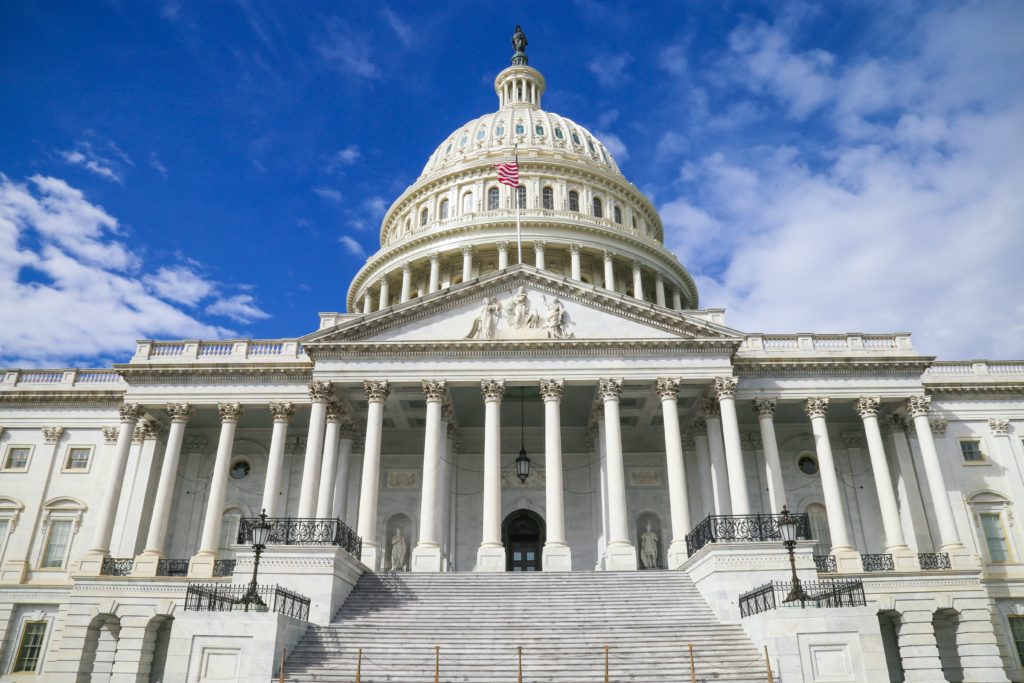The American Rescue Plan Act (ARPA) of 2021 passed Congress, and President Biden signed the bill into law on March 12.
The ARPA approves $1.9 trillion in spending for individuals, businesses, governments and certain industries impacted by the COVID-19 pandemic. The third act in a year, the ARPA approves additional economic impact payments for individuals; the extension of federal unemployment benefits; additional funds for Paycheck Protection Program (PPP) loans and Economic Injury Disaster Loans (EIDL) for hard-hit small businesses; and grants for food and beverage establishments. Here are the key individual and business provisions in the bill.
Individual Provisions in ARPA
The bill extends and slightly alters two key benefits many individuals have been relying upon through the pandemic.
Unemployment — Federal benefits of $300 per week (in addition to state benefits) are extended through Sep. 6, 2021. The first $10,200 in federal unemployment benefits is tax-free for households making less than $150,000 per year in 2020. Taxpayers who received unemployment income may need to update 2020 tax returns if already filed.
Economic impact (stimulus) payments (EIPs) — The IRS will issue another round of EIPs at $1,400 per individual, $2,800 per married filing joint (MFJ), plus $1,400 per dependent. Income phase-out limits reduce from previous EIPs to $80,000 for individuals and $150,000 for MFJ. Full-time students under the age of 24 are now eligible for economic impact payments (EIP), unlike previous rounds. Your 2019 or 2020 adjusted gross income (AGI) is the basis for EIPs, so taxpayers will want to consider when to file their 2020 tax return to ensure a maximum EIP benefit.
Small Business Funding Provisions in ARPA
The bill includes additional funding for small business relief programs, including the PPP, EIDLs, and industry-specific relief.
PPP — The act allocates an additional $7.25 billion, and the eligibility expands to include:
- Nonprofits listed under Sec. 501(c) that are not (c)(3), (4), (6), or (19)s with 300 or fewer employees can now apply. To be eligible, you must not receive more than 15% of receipts from lobbying, and lobbying cannot comprise more than 15% of activities. The cost of lobbying cannot exceed $1 million.
- Larger 501(c)(3)s and veterans’ organizations with up to 500 employees.
- Larger 501(c)(6)s, domestic marketing organizations, and additional covered nonprofits with up to 300 employees per physical location.
- Internet-only news and periodical publishers with more than one location and no more than 500 employees per location as eligible as long as the organization supports locally focused or emergency information.
As of this publishing, the deadline to apply for a PPP grant was March 31, 2021. A resolution has passed the House of Representatives to extend the PPP application deadline. We will provide additional updates as they become available.
EIDL advance payments — The act allocates $15 billion for EIDL advance payments, and eligibility requirements state:
- Businesses must be in low-income communities with no more than 300 employees.
- The economic loss of more than 30% must be shown through gross receipts decline in an 8-week period between Mar. 2, 2020, and Dec. 31, 2021, compared to a comparable 8-week period immediately preceding Mar. 2, 2020.
- The timeline for issuing advances is as follows:
- First 28 days — Reserved for those who applied for targeted EIDL advances under the EAA and did not receive one due to lack of funds.
- Next 14 days — Reserved for severely impacted small businesses to receive grants of up to $5,000. Eligible entities must have a loss of more than 50% and 10 or fewer employees.
- Next 14 days — Reserved for substantially impacted businesses to receive grants of up to $5,000 if they had a loss between 30-50% and 10 or fewer employees.
- Funds from Restaurant Revitalization Fund (RRF) and targeted EIDL advances are not included in gross income. No tax deductions will be denied, no tax attributes reduced, and no basis increase denied due to this exclusion from gross income.
Restaurants, bars, and other eligible food and beverage providers — The act allocates $28.6 billion for grants, and $5 billion is set aside for applicants with 2019 gross receipts of $500,000 or less.
- Eligibility expands to food stands, food trucks, food carts, caterers, saloons, inns, taverns, lounges, brewpubs, tasting rooms, taprooms and any licensed facility of a beverage alcohol producer that provides tasting, sampling or purchasing.
- Grants are equal to the pandemic-related revenue loss of up to $10 million per entity or $5 million per physical location, limited to 20 locations.
- The grant revenue loss is calculated by subtracting 2020 revenue from 2019 revenue.
- Grant funds may cover payroll, principal and interest on mortgage, rent payments (not prepayments), utilities, maintenance for outdoor seating, PPE supplies, food and beverage expenses within the scope of normal business, covered supplier costs, operational expenses, and paid sick leave.
- Good-faith certification is required.
- Applicants cannot also apply for or receive a Shuttered Venue Operator grant.
- There is a 21-day preference period for minority-owned and operated businesses, including women, veterans, and the socially and economically disadvantaged.
- The SBA must distribute grants in an “equitable manner to eligible entities of different sizes and annual receipts.”
Shuttered venue operators — The program is extended from the Consolidated Appropriations Act (CAA) with $1.25 billion allocated.
Community navigator pilot programs — $175 million is allocated for programs that increase awareness of and participation in COVID-19 relief programs for socially and economically disadvantaged business owners.
Other Provisions of ARPA
- State, local, and tribal support — An allocation of $350 billion for costs incurred by the end of 2024. You cannot use funds to offset tax cuts or create a pension fund. Small states should receive at least the same amount of funding as the Coronavirus Aid, Relief and Economic Security (CARES) Act.
- $750 million is allocated to communities with revenue hits due to declining tourism, travel, and outdoor recreation.
- K-12 schools — $130 billion
- Colleges and universities —$40 billion
- COVID-19 testing, vaccine support, hospital funding, public health emergencies, biomedical research — $92 billion
- Airline industry and airports — $23 billion
- Emergency rental and housing assistance — $30 billion
Key Tax Provisions in ARPA
ARPA makes significant updates to several tax provisions to alleviate some of the pandemic’s financial burdens for individual taxpayers and businesses. Updates include expansions and extensions of various tax credits such as the employee retention credit (ERC), COBRA continuation coverage, Affordable Care Act (ACA) subsidies, and more. The bill also includes $1.46 billion for the IRS to manage the additional responsibilities on top of the annual tax filing season. Here are the critical tax updates.
Individual Tax Provisions in ARPA
Significant updates were made for individual taxpayers to deal with the financial ramifications of the pandemic.
COBRA continuation coverage credit expanded — Health care premiums will be subsidized at 100% for those who are eligible for COBRA from the date of enactment to Sep. 21, 2021.
- Employers can receive a refundable credit for COBRA continuation coverage premium assistance and is taken against Medicare tax. Advance payments are available and apply to wages paid after Apr. 1, 2021.
- Taxpayers who receive this credit are not eligible for the health coverage tax credit (Sec. 35). This coverage premium assistance is not includable in gross income.
ACA marketplace subsidies expanded — Health insurance premium cost savings for all marketplace exchange users are included in the bill.
- The income cap for premium subsidies in the health insurance marketplace is eliminated for 2021 and 2022 coverage for individuals at 150% of the federal poverty line (FPL) or less.
- Premium costs for households at 400% of FPL would be capped at 8.5% of their household income for benchmark plans (second-lowest-cost Silver plans), which may mean significant health insurance premium savings for many households. Households in this category can spend as much as 50% of their income on health insurance, according to healthinsurance.org.
- Subsidies will phase out as income increases, and subsidies are not available for benchmark plans that cost less than 8.5% of household income.
- Subsidies will increase for those who already qualify for subsidies as the plan reduces the percentage of income expected for benchmark plans.
- Taxpayers receiving unemployment compensation in 2021 whose income is between 100% and 400% of the FPL qualify for reduced cost-sharing on silver plans.
- Applicable extra subsidies can be claimed immediately or on the 2021 tax return. A special enrollment period is available until May 15, 2021, for most states.
Child tax credit increased — The child tax credit can now be claimed in advance of filing your return and increases to $3,000 per child (now including 17-year-olds) and $3,600 for children under six years of age. It phases out for married-filing-joint taxpayers with incomes over $150,000, $112,500 for heads of household, and $75,000 for all others. The credit will be paid monthly in cash up to $300 per month by the IRS from July through December.
Earned income credit expanded — The bill introduces rules for individual taxpayers with no children for 2021:
- The maximum credit is now $1,502, up from $543.
- The minimum age is now 19, except for students (24) and former foster youth (18). The maximum age is eliminated.
- The phase-out amount is increased to 15.3%.
- Certain separated spouses are now eligible.
- The threshold for disqualifying income rises to $10,000 from $2,200.
- Taxpayers may temporarily use 2019 income instead of 2021 for calculation.
Student loan forgiveness — Any student loan forgiveness passed between Dec. 31, 2020, and Jan. 1, 2026, would be tax-free rather than the forgiven debt treated as taxable income.
Business Tax Provisions in ARPA
Business tax provisions were also extended and expanded to help businesses with the financial challenges of the pandemic.
ERC extended — The ERC is extended through Dec. 31, 2021, and expands the eligibility to new startups established after Feb. 15, 2020 (capped at $50,000 per calendar quarter), and companies with a 90% revenue decline compared to the same calendar quarter of the previous year.
Child and dependent care credit expanded — The credit is refundable for 2021. It increases the employer-provided dependent care assistance exclusion to $10,500. The maximum allowable expenses increase to $8,000 (from $3,000) for one dependent and $16,000 (from $6,000) for two or more and allow the credit to cover 50% of expenses.
Family and sick leave credit extended — The Families First Coronavirus Response Act (FFCRA) credits are extended to Sept. 30, 2021, and include:
- Limit increase to $12,000.
- The number of days for calculation increase from 50 to 60 and resets after Mar. 31, 2021.
- Eligibility extended for leave due to COVID-19 vaccination.
- Eligibility extended to 501(c)(1) government organizations.
Executive compensation deduction expanded — The executive compensation deduction for publicly traded employers expands to include the eight highest compensated employees other than the CEO and CFO by 2027. A deduction is available on the first $1 million paid to the CEO, CFO, and next three highest compensated officers.
For questions and assistance with any of the programs related to ARPA, contact us.

Frank Granatino, CPA, of Goering & Granatino is a graduate of Missouri State and a CPA, but, moreover, he is a problem solver who uses his deep knowledge and understanding of the industry to find ways to do things faster and more efficiently for his clients. From creating customized reporting templates to spending time with his clients to educate them on how best to organize their businesses, Frank helps companies perform at their best. Often, we have clients comment that Frank feels like a member of their teams. He gets in there, rolls up his sleeves and makes things happen.


